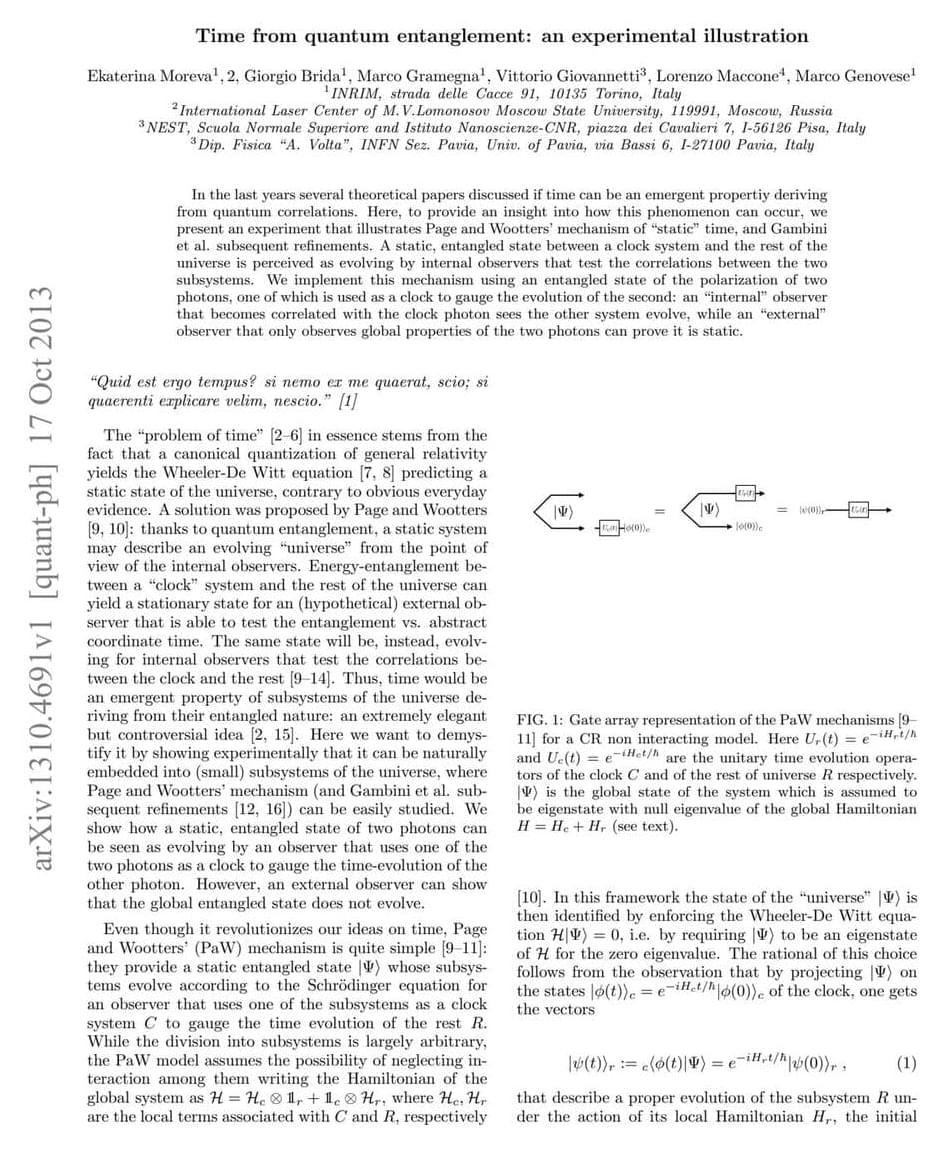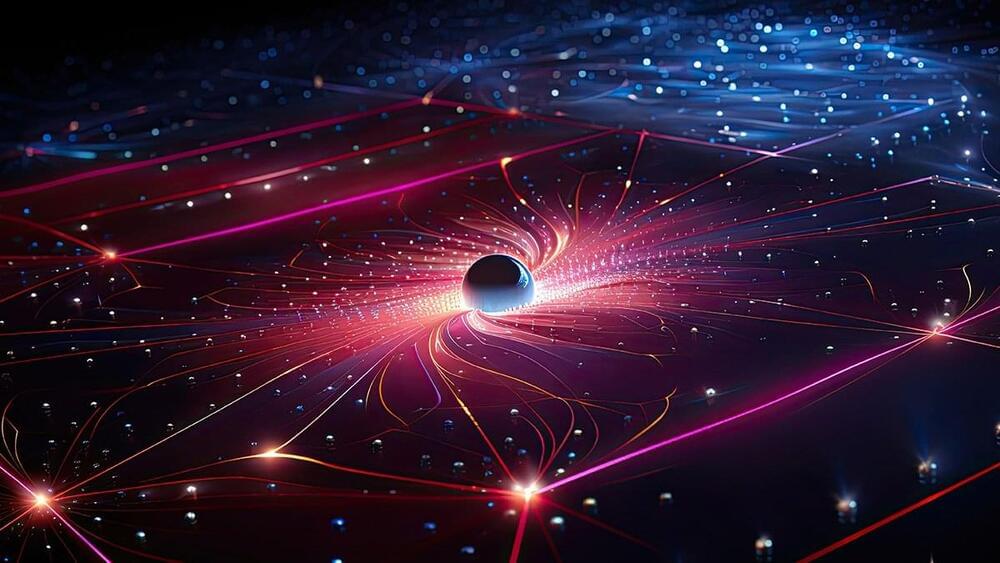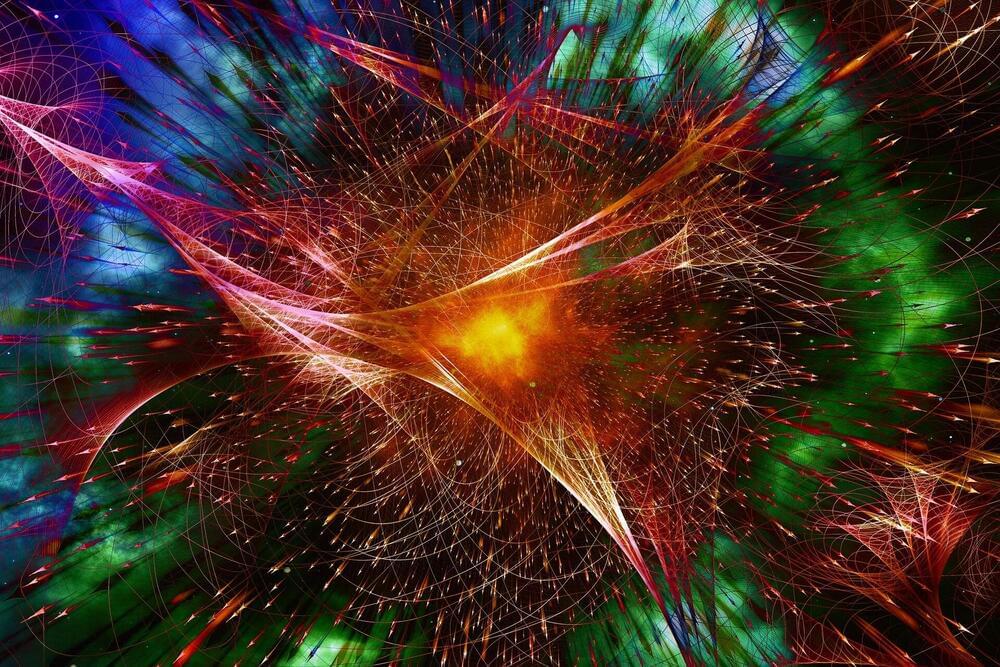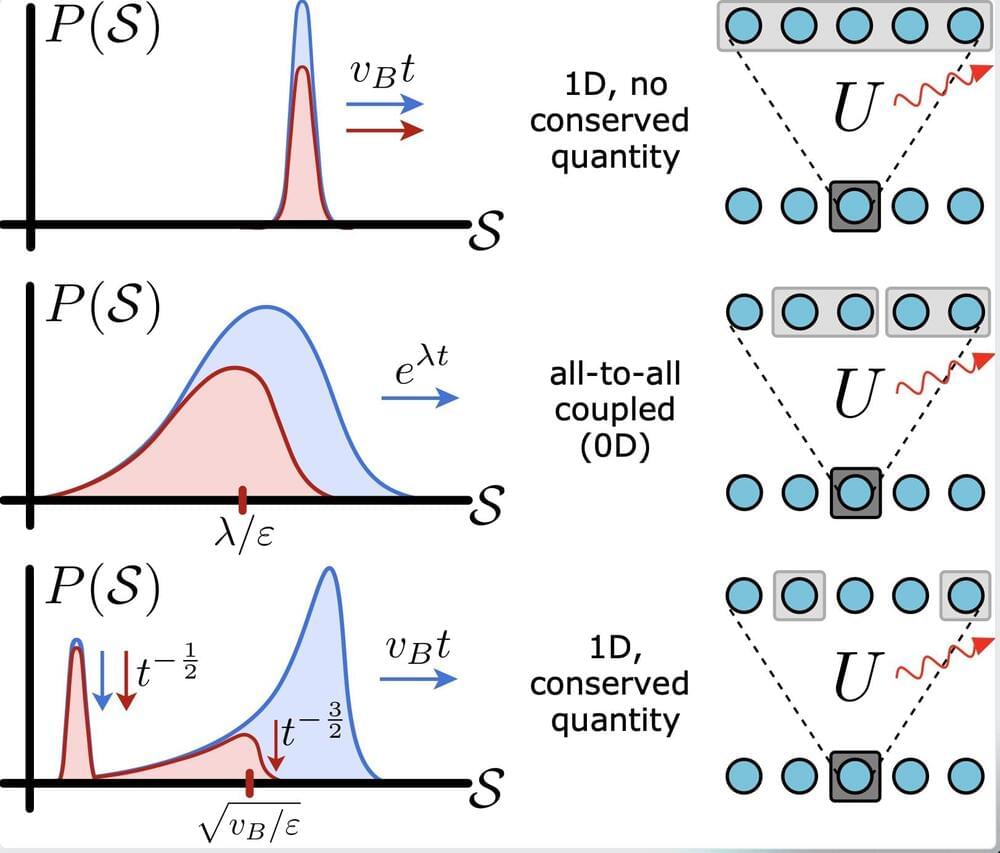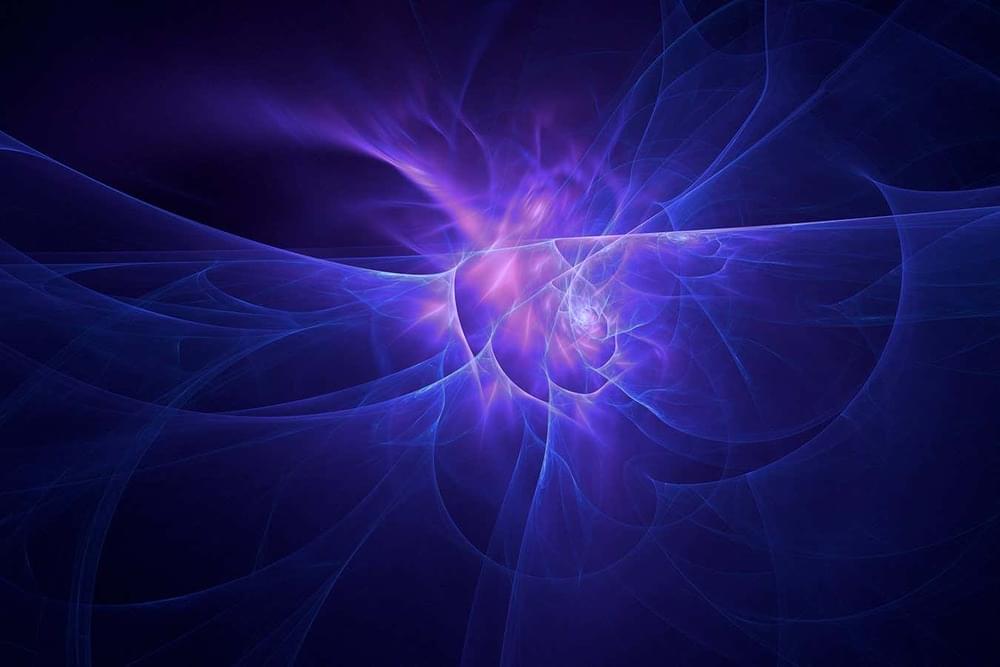Archive for the ‘quantum physics’ category: Page 207
Nov 25, 2023
Could IonQ become the next Nvidia?
Posted by Dan Breeden in categories: quantum physics, robotics/AI
Nvidia’s (NASDAQ: NVDA) stock has rallied about 1,110% over the past five years, turning it into the world’s first trillion-dollar chipmaker. A large portion of that rally was fueled by the explosive growth of the artificial intelligence (AI) market, which drove more companies to buy Nvidia’s high-end data center chips for processing AI tasks.
Nvidia might still have room to run, but it’s asking a lot for a $1.2 trillion company to generate even bigger multibagger gains. Therefore, many investors are already likely seeking out the “next Nvidia” — a company that is exposed to the same secular AI tailwinds but has more upside potential. Could the quantum computing company IonQ (NYSE: IONQ) check all the right boxes?
Unlike traditional computers, which process data with binary “bits” of zeros and ones, quantum computers can store zeros and ones simultaneously in “qubits” to process data at much faster rates. However, quantum computing systems are also much larger, more expensive, and more prone to making mistakes than traditional computers.
Nov 25, 2023
Europe has lost the AI race. It can’t ignore the quantum computing one
Posted by Dan Breeden in categories: business, quantum physics, robotics/AI
Europe has become known as a second-place destination for business, and more recently, innovation.
Disruptive technologies like AI have hailed from the United States for decades with no European challenger in sight.
However, when a four-week-old French AI startup secured €105 million for its seed round, it demonstrated that Europe isn’t as disadvantaged as people think. While AI is a saturated market, quantum computing can allow Europe to survive in a century ruled by China and the US.
Nov 25, 2023
Gödel’s incompleteness theorems don’t rule out artificial intelligence
Posted by Dan Breeden in categories: information science, quantum physics, robotics/AI
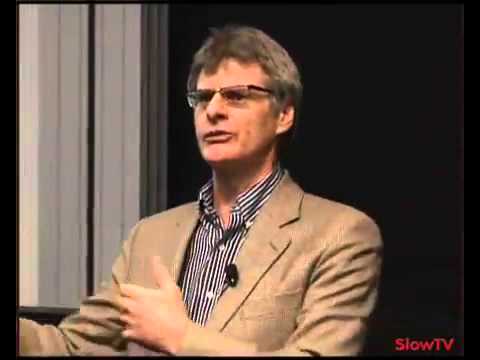
I’ve posted a number of times about artificial intelligence, mind uploading, and various related topics. There are a number of things that can come up in the resulting discussions, one of them being Kurt Gödel’s incompleteness theorems.
The typical line of arguments goes something like this: Gödel implies that there are solutions that no algorithmic system can accomplish but that humans can accomplish, therefore the computational theory of mind is wrong, artificial general intelligence is impossible, and animal, or at least human minds require some as of yet unknown physics, most likely having something to do with the quantum wave function collapse (since that remains an intractable mystery in physics).
Continue reading “Gödel’s incompleteness theorems don’t rule out artificial intelligence” »
Nov 24, 2023
Will quantum cryptography soon be essential for IoT security?
Posted by Genevieve Klien in categories: computing, encryption, quantum physics, security
As connectivity continues to expand and the number of devices on a network with it, IoT’s ambition of creating a world of connected things grows. Yet, with pros, comes the cons, and the flip side of this is the growing security challenges that come with it too.
Security has been a perennial concern for IoT since it’s utilisation beyond its use for basic functions like tallying the stock levels of a soda machine. However, for something of such interest to the industry, plans for standardisation remain allusive. Instead, piece meal plans to ensure different elements of security, like zero trust for identity and access management for devices on a network, or network segmentation for containing breaches, are undertaken by different companies according to their needs.
Yet with the advancement of technology, things like quantum computing pose a risk to classic cryptography methods which, among other things, ensures data privacy is secure when being transferred from device to device or even to the Cloud.
Nov 24, 2023
What Is Quantum Advantage? A Quantum Computing Scientist Explains An Approaching Milestone Marking The Arrival Of Extremely Powerful Computers
Posted by Paul Battista in categories: computing, encryption, information science, quantum physics

Quantum advantage is the milestone the field of quantum computing is fervently working toward, where a quantum computer can solve problems that are beyond the reach of the most powerful non-quantum, or classical, computers.
Quantum refers to the scale of atoms and molecules where the laws of physics as we experience them break down and a different, counterintuitive set of laws apply. Quantum computers take advantage of these strange behaviors to solve problems.
Nov 24, 2023
Physicists find evidence of exotic charge transport in quantum material
Posted by Paul Battista in categories: nanotechnology, quantum physics
True to form, a “strange metal” quantum material proved strangely quiet in recent quantum noise experiments at Rice University. Published this week in Science, the measurements of quantum charge fluctuations known as “shot noise” provide the first direct evidence that electricity seems to flow through strange metals in an unusual liquidlike form that cannot be readily explained in terms of quantized packets of charge known as quasiparticles.
“The noise is greatly suppressed compared to ordinary wires,” said Rice’s Doug Natelson, the study’s corresponding author. “Maybe this is evidence that quasiparticles are not well-defined things or that they’re just not there and charge moves in more complicated ways. We have to find the right vocabulary to talk about how charge can move collectively.”
The experiments were performed on nanoscale wires of a well-studied quantum critical material with a precise 1−2−2 ratio of ytterbium, rhodium and silicon (YbRh2Si2). The material contains a high degree of quantum entanglement that produces temperature-dependent behavior.
Nov 24, 2023
Are You Secretly A Quantum Computer?
Posted by Dan Breeden in categories: neuroscience, quantum physics, supercomputing
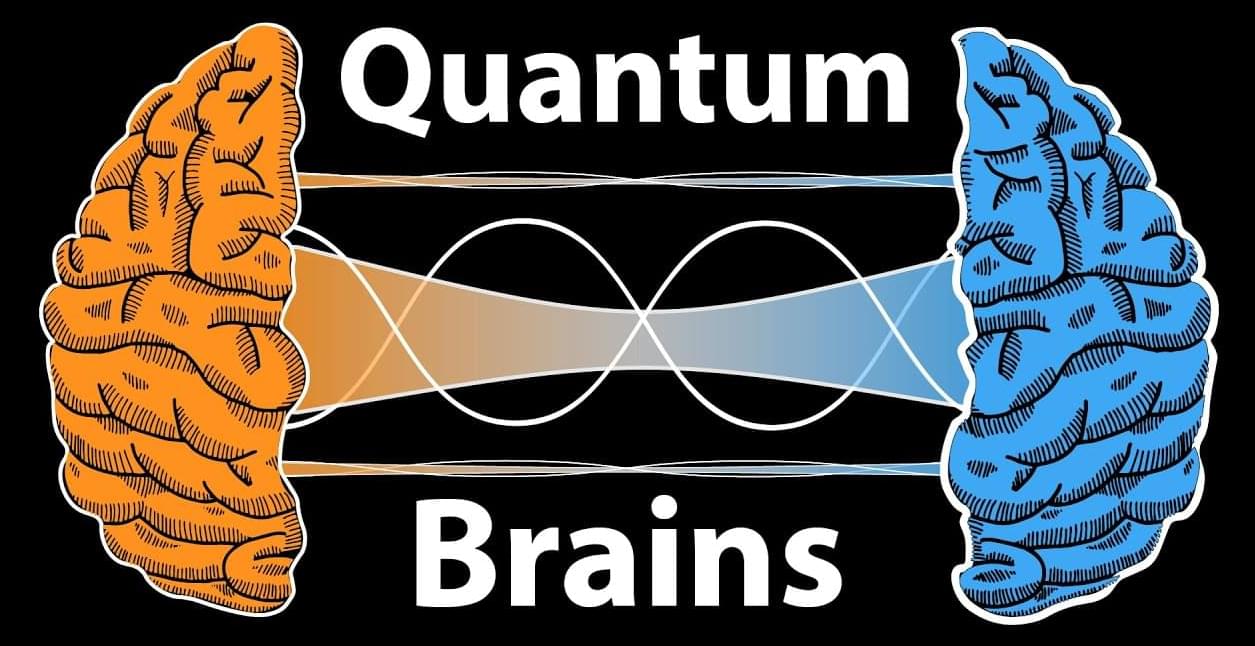
How are we so smart? We seem to be able to make process data with ease, doing tasks in seconds that take supercomputers much longer. Well, one thought is that we fundamentally take advantage of quantum mechanics to perform calculations similar to a quantum computer. This would give us a biologically produced quantum speed up in our brains. Until recently this was just a thought, there is no evidence that this is true. Well, now scientists believe that they may have found evidence of quantum interaction in our brains. Even more importantly, they showed that these quantum interactions are related to our consciousness. In this video, I discuss these latest results.
— References —
[1] https://iopscience.iop.org/article/10.1088/2399-6528/ac94be.
[2] https://phys.org/news/2022-10-brains-quantum.html.
[3] https://scitechdaily.com/shocking-experiment-indicates-our-b…mputation/
Nov 23, 2023
A universal framework describing the scrambling of quantum information in open systems
Posted by Paul Battista in categories: particle physics, quantum physics
In recent years, physicists have been trying to better understand how quantum information spreads in systems of interacting particles—a phenomenon often referred to as “scrambling.” Scrambling in closed systems, physical systems that can only exchange energy with degrees of freedom within the system, is a characteristic feature of chaotic many-body quantum dynamics.
In open systems, which can exchange both energy and matter with their surroundings, scrambling is influenced by various additional factors, including noise and errors. While the effects of these additional influences are well-documented, leading for example to decoherence, how they affect scrambling remains poorly understood.
Two researchers from the University of California Berkeley (UC Berkeley) and Harvard University recently introduced a new framework, published in Physical Review Letters, that provides a universal picture for how information scrambling occurs in open quantum systems. Their framework offers a particularly simple viewpoint on how to understand and model the propagation of errors in an open quantum system and might already help to explain some previously puzzling observations gathered in magnetic resonance experiments.
Nov 23, 2023
Lasers fired at crystals could uncover quantum nature of the vacuum
Posted by Shailesh Prasad in category: quantum physics
Ultra-short laser pulses may allow us to measure entanglement in a way that answers questions about the quantum nature of the vacuum.
